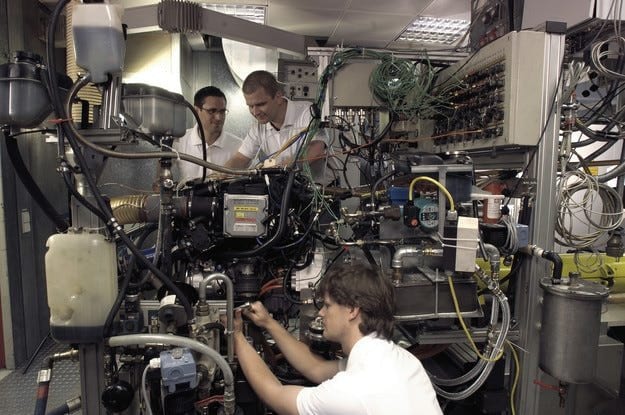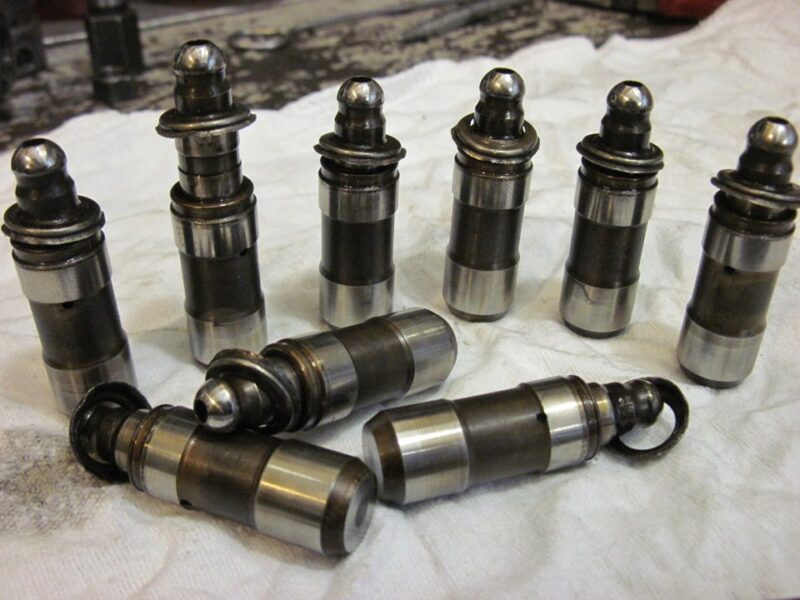
Hydraulic lifters: what they are and why they knock
Content
- What can a hydraulic lifter
- A bit of history
- The principle of operation of the hydraulic compensator
- What are the types and types of hydraulic compensators
- Pros and cons of a hydraulic expansion joint
- How to choose hydraulic lifters
- Diagnostics and replacement of hydraulic lifters
- Why do hydraulic lifters knock
- How to extend the life of hydraulic lifters
- How often to change the hydraulic valve lifters?
- How to flush the hydraulic lifter yourself
- Procedure for installing hydraulic lifters
- Hydraulic lifters video
- Questions and answers:
An internal combustion engine is the most complex unit in a car, the efficiency of which depends on the fine tuning of each mechanism associated with it. An example of this is the design of the gas distribution mechanism. It opens the intake and exhaust valves when the piston moving in the cylinder completes the corresponding stroke.
Everyone knows that during the operation of the internal combustion engine, all its parts heat up. At the same time, metal products expand. And when the motor is running, many processes in it are performed in a matter of fractions of a second. In this case, every micron of the gaps plays a role. If the valve opens a little earlier or later, this will significantly affect the efficiency of the power unit.
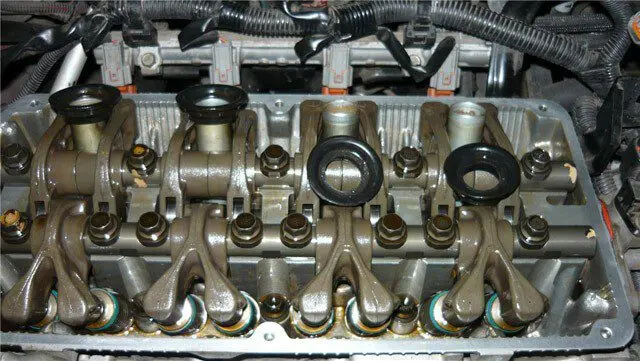
To this end, in old motors, gaps were set between the valve tappet and the timing shaft cam. In modern motors, this process is simplified as much as possible. To be precise, the need for this has disappeared, since engineers have developed such a detail as a hydraulic compensator.
What can a hydraulic lifter
The hydraulic expansion joint is installed between the valve tappet and the camshaft cam. This part independently adjusts the size of the thermal gap. As the name implies, automatic adjustment occurs due to the hydraulic action of the oil on the expansion joint elements.
If earlier this function was performed by mechanical devices that constantly needed adjustment or replacement, these elements work automatically, making life easier for the car owner.
A bit of history
In old engines, for example, the Soviet classics, there were no hydraulic or mechanical expansion joints for the thermal gap. For this reason, the routine maintenance of the vehicle included the mandatory adjustment of this parameter. Manufacturers often set an interval of 10 thousand kilometers.
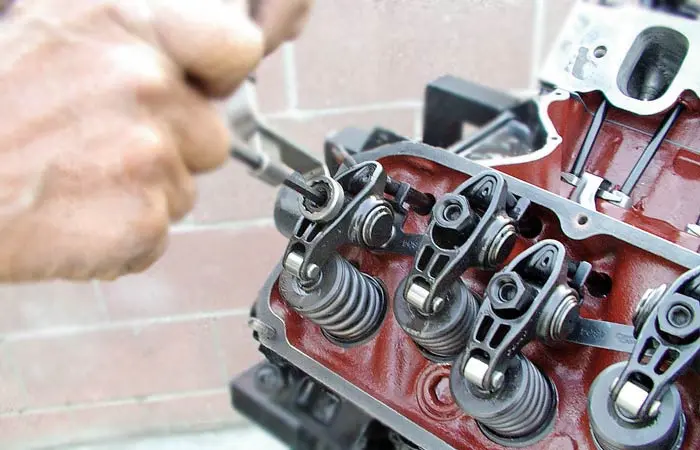
When this procedure was performed, the valve cover was removed and the value of the thermal gap was adjusted with a special probe and key. Not every owner could independently perform this procedure, and if this was not done, the engine began to run noisily and lose its dynamic properties.
In such engines, the valves had to be changed every 40-50 thousand mileage, which added headaches to the owners of such cars. The design needed to be improved, so a washer of a certain thickness began to be installed between the pusher and the cam. Now it was not the valve stem itself that was wearing out, but this part.
Despite this, the adjustment still had to be made, and the repair work was reduced to a simple replacement of the washer. Some manufacturers still use similar parts in their car engines.
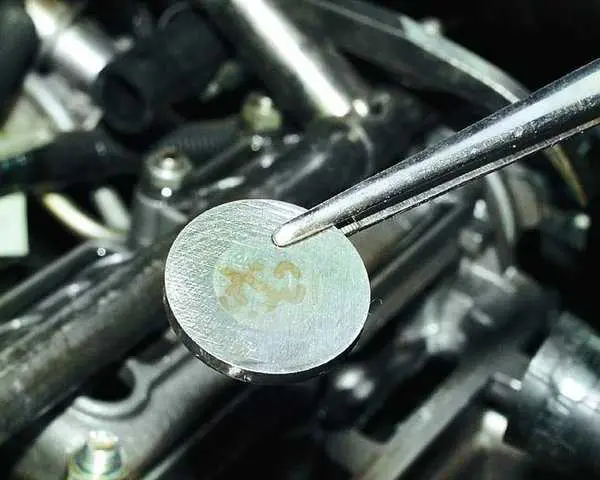
Despite the significant improvement in the operation of the gas distribution mechanism, the maintenance of the unit still had to be carried out quite often.
Mechanical expansion joints were replaced by an original mechanism that corrected the gaps automatically. The system of hydraulic expansion joints has increased the interval of maintenance work on the internal combustion engine almost three times, and now you need to look under the valve cover much less often - no more than 120 thousand kilometers.
The principle of operation of the hydraulic compensator
The hydraulic compensator has the following device:
- A metal case in which all the elements of the mechanism are installed;
- Plunger pair (for more details about the principle of operation of this element, read using the example of a plunger pair of a high-pressure fuel pump), which is powered by oil pressure;
- Ball - serves as a check valve;
- Spring - Allows the plunger valve to move into place when the part is at rest.
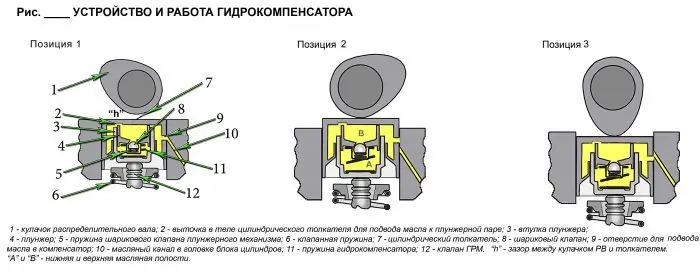
The hydraulic compensator operates in the following two modes:
- The cam of the camshaft is turned away from the working surface of the compensator. There is no pressure on the plunger spring, so it raises it so that it is pressed against the cam. The plunger is filled with oil. The fluid pressure is equal to the pressure in the engine lubrication system;
- When the cam rotates towards the valve, it drives the plunger, lowering it towards the valve stem. The spring rate is selected so that the valve in the cylinder head opens in accordance with the cam position with minimal effort. To increase pressure on the valve stem, the volume of oil in the sub-piston space is used.
Thus, the hydraulic compensator "adjusts" not only to the thermal expansion of the timing parts, but also to the wear of the cams and valve stems. Such an original solution excludes the frequent adjustment of the mechanism for these changes.
Briefly about the operation of the hydraulic compensator is described in this video:
Hydraulic lifter location
To find a hydraulic compensator in the motor, you need to understand the design features of the engine. In standard modern power units, a head is located above the cylinder block, and a camshaft is installed in it. Its cams drive intake and exhaust valves.
Hydraulic compensators, if they are available in this motor modification, will be installed just between the cam and the valve stem. The hydraulic compensator maintains a constant valve-to-cam clearance, regardless of the temperature (and, of course, valve stem expansion) of the valves.
What are the types and types of hydraulic compensators
The principle of operation of one of the types of compensators was described above. The engineers of each individual car company can use other types of hydraulic lifters:
- Hydraulic pusher as described above. It is installed between the camshaft cam and the valve stem;
- Hydro support;
- In old motors, a hydraulic support was used, which was installed in the rocker arms or in the levers of the valve pushers;
- Roller hydraulic pushers.
Most car manufacturers are trying to get away from hydraulic supports, since the device of hydraulic pushers is as simple as possible. Although a device such as a gas distribution mechanism may not allow the use of this type of expansion joints. The photo below shows which location of the hydraulic lifter may be depending on the type of engine timing.
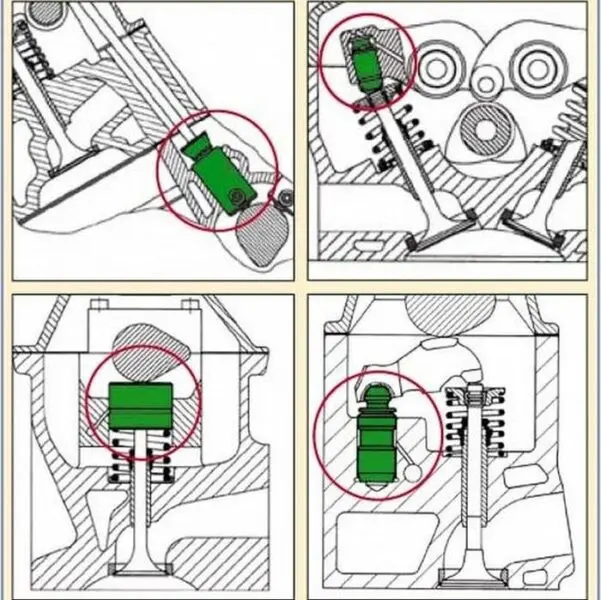

Pros and cons of a hydraulic expansion joint
Hydraulic lifters have many advantages. These include:
- Low noise of the motor;
- No need to adjust the clearances of thermal and valve caused by natural wear;
- Maintenance free;
- Provides constant pressure of the valve stem to the camshaft cam, which ensures high efficiency even for a heavily worn gas distribution mechanism;
- Stable dynamic characteristics of the old motor.
However, despite the abundance of advantages, advanced technology also has several major disadvantages:
- Hydraulic compensators use oil pressure, and the holes in them are so small that the thick grease will simply not physically get inside, especially if the system has not yet had time to warm up. For this reason, high-quality oil must be poured into the engine - most often synthetics. But a motor with a high mileage, on the contrary, needs a thicker lubricant - the O-rings are already a little worn out, so synthetics are not able to create a high-quality oil wedge. Because of this, the dynamics of the motor drops;
- Even if synthetics are used, the oil still needs to be changed more often, since over time it loses its fluidity;
- In case of failure, you will need to buy ideally the same part, and not a cheaper analogue (the location of the hydraulic compensator does not allow the use of a design other than that provided by the manufacturer);
- Since the breakdown occurs at later stages, the repair will be more expensive than with the planned maintenance of the internal combustion engine;
- Sometimes, due to poor quality lubrication, the plunger can clog, which will lead to improper operation of the mechanism.
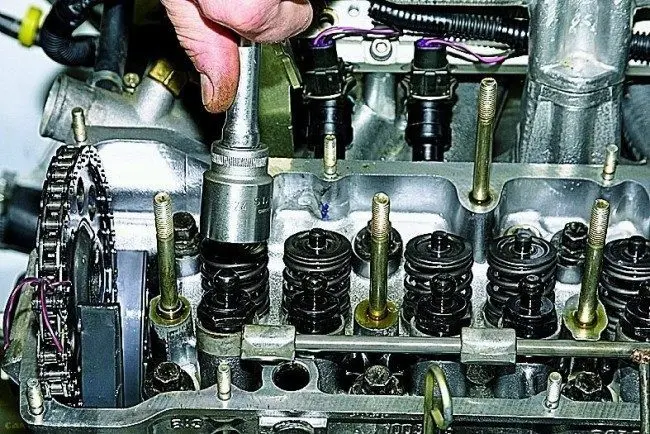

The biggest disadvantage is the requirement for oil quality. If a motorist ignores the requirements for this parameter, very soon he will have to fork out for the purchase of new expansion joints. In the case of motors that have developed a long resource, mechanical analogs will be a good alternative - they prevent valve wear and at the same time regulate the thermal gap.
How to choose hydraulic lifters
If the engine timing belt is equipped with hydraulic lifters, then the question of whether to buy new parts or not is not worth it - definitely buy. Otherwise, the phase distribution in the power unit will not work correctly - the cam will not be able to open the valve in time, and the motor will lose its efficiency.
If it is not known which models are installed in the engine, then the search for hydraulic lifters is carried out by the VIN-code of the vehicle or by the motor model in the catalog. It is worth considering that some sellers call any expansion joints pushers. When selecting a part, you can also indicate to the seller the type of gas distribution mechanism (SOHC or DOHC - read about the difference between such modifications here).


When choosing a budget or original compensator, you should also pay attention to its technical characteristics - weight, spring rate, etc. (if they are listed in the catalog). If the valves have a small stroke, then lightweight expansion joints can be installed.
Which hydraulic lifters are better
When choosing this part, you should remember: a budget analogue often requires replacement. But even among the so-called original spare parts, a fake comes across. In order not to waste money on low-quality products, pay attention to manufacturers who have proven themselves in the auto parts market.
Also note that the auto manufacturers themselves do not manufacture hydraulic expansion joints. They use the services of individual companies, so this part does not exist from the manufacturer - they are purchased from independent companies and sold like the original, but at a higher price.
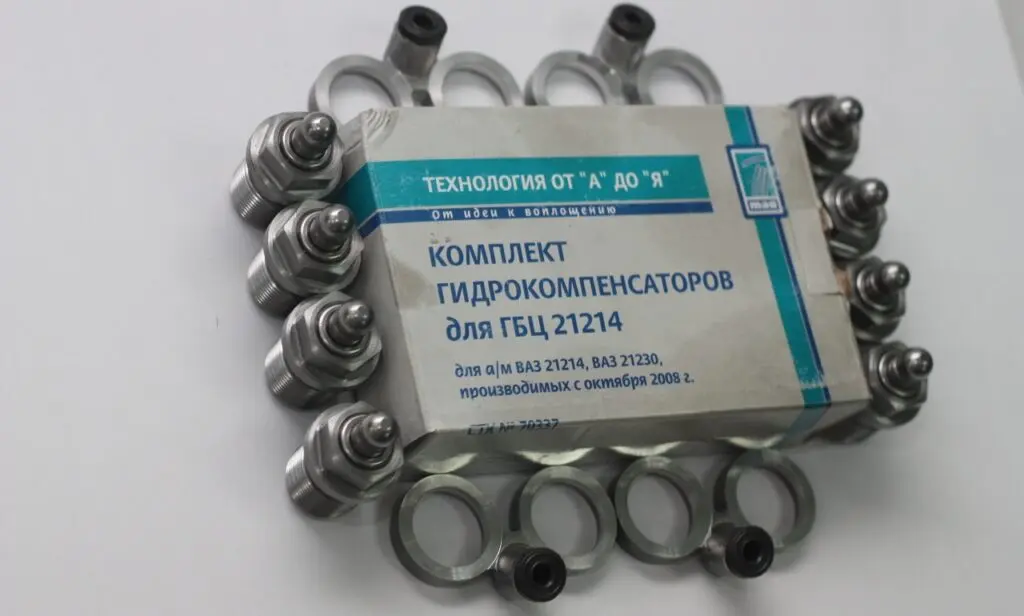

You can stop your choice on the following manufacturers:
- German manufacturer INA. Hydraulic compensators are of excellent quality and almost never fail ahead of schedule;
- Another German company Febi, but the quality of their products is slightly lower than that of the previous representative. The country of manufacture is indicated on the packaging of the part - you should pay attention to this, since Chinese factories do not always produce premium products;
- SWAG is a company whose services are used by the manufacturers of the VAG group (about which car brands are included in the concern, told a little earlier). Parts of this company are in the budget category, but counterfeiting is much more common;
- Below in the ranking are the Spanish-made hydraulic lifters AE or Ajusa. The consequence of the relatively low cost is a small working resource (about 10 mileage). Another drawback is the high demands on the quality of the oil.
Diagnostics and replacement of hydraulic lifters
Malfunction of hydraulic lifters is diagnosed by knocking them. A phonendoscope is used to make sure that the characteristic sound comes from the compensators.
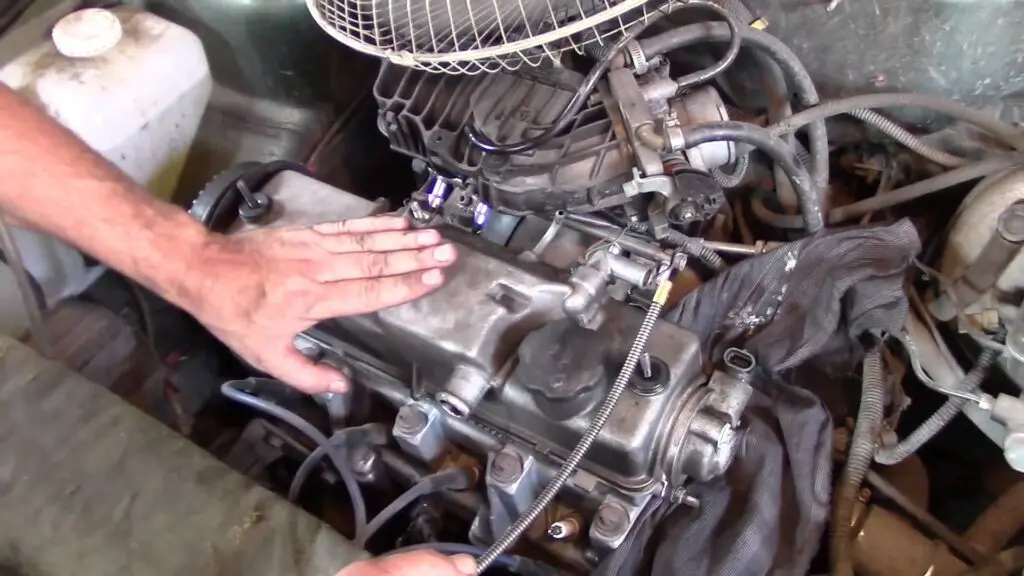

If a malfunction of the hydraulic lifters is established, then they are dismantled with a magnet, but this is in the case of a clean and serviceable timing mechanism. It happens that the part sticks to the seat, which is why dismantling must be done with a special puller.
There are several ways to check the performance of the hydraulic lifter. First, an external examination of the part is carried out to find defects. The working surface of the element will be visible to the naked eye. Secondly, there are collapsible expansion joints. In this case, you can inspect the internal components to determine the degree of wear.
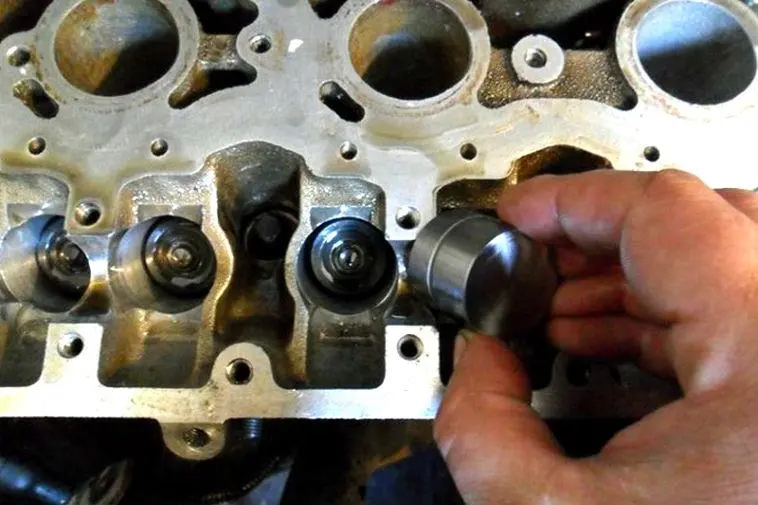

Another diagnostic method - oil is poured into the dismantled expansion joint. A working part cannot be squeezed with your fingers. Otherwise, it should be replaced.
Why do hydraulic lifters knock
The clatter of hydraulic lifters can be observed even in new cars, so this is not always a symptom of some kind of breakdown. This effect can be observed both on an unheated internal combustion engine and on a power unit that has already reached operating temperature. Regardless of why this happens, this noise should by no means be ignored, since this malfunction will certainly affect the performance of the gas distribution mechanism.
Consider the common causes of knocking hydraulic lifters in different engine states.
The reasons for the knock of the hydraulic compensator "hot" (when the engine is warmed up):
This effect in a hot motor appears due to:
- Poor quality engine oil, or it has not been changed for a long time;
- Dirty oil filter - because of it, the oil does not reach the hydraulic lifters under the required pressure;
- A failed oil pump (or its performance has decreased, due to which it creates insufficient pressure in the engine lubrication system);
- Worn out plungers and hydraulic compensator sleeves, which leads to oil leaks (in this case, parts are changed);
- Breakage of the hydraulic lifters themselves.
The reasons for the knock of the hydraulic compensator “cold” (when the engine is not warmed up):
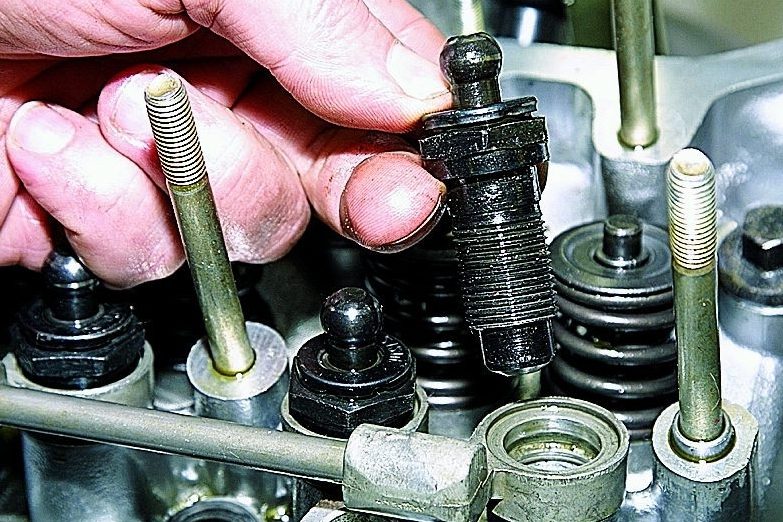

The knock of hydraulic lifters can also only be on an unheated power unit, and as it heats up, this sound disappears. Here are the reasons for this:
- The channels of the hydraulic lifters are dirty. Since cold oil is more viscous compared to an already warmed-up lubricant, it is extremely difficult for it to pass through the blockage in the channel, but as it heats up, the oil becomes liquid and is easier to press through;
- Incorrectly selected oil. Usually inexperienced motorists face this problem. If a thicker lubricant is selected, then the hydraulic lifters will definitely knock;
- The hydraulic compensator valve does not hold pressure, which is why when the engine stops, oil goes into the sump.
If the knock of the hydraulic lifters appears when the engine rises at increased speed, then here are the possible reasons for this:
- The oil level in the crankcase exceeds the maximum level, which causes it to foam;
- The oil level in the crankcase is too low, which causes the oil pump to suck in air;
- The oil receiver is damaged due to the impact of the pallet on an obstacle on the road (for this reason, experienced motorists recommend installing a pallet protection on the car, which is discussed in detail in a separate article).
If a knock appears in one or more valves, regardless of the crankshaft speed, this may be due to the fact that the gap between the tappet and the cam (located on the camshaft) has increased. To eliminate this malfunction, the cylinder head is removed, and the cams are alternately set vertically (the thin part of the "droplet" should be at the top), and it is checked whether there is a gap between the pusher and the cam.
The stroke of the hydraulic pusher is also checked (the element being checked is pressed with a wooden wedge). If one of the hydraulic lifters works noticeably freer than the others, then it must be replaced or disassembled and its elements cleaned.
To eliminate the knocking sound of recently replaced expansion joints, flushing of the thin channels in the lubrication system will be required. To do this, you can use special tools, for example, Liqui Moly Hydro Stossel Additiv. It is added to the lubrication system of a car after the engine has warmed up. The effect of the remedy comes after 500 kilometers.
Such additives should not be used immediately or as a preventive measure, as the substance can increase the thickness of the oil, which can adversely affect the lubrication of the entire engine.
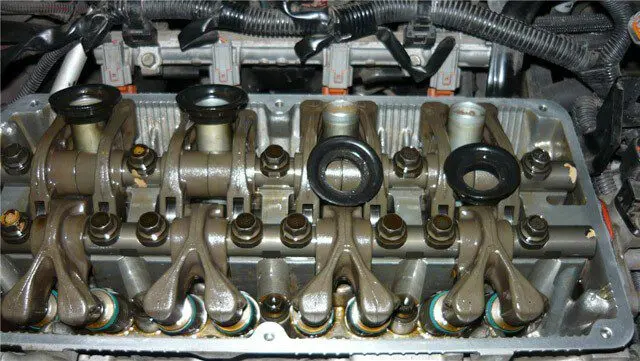

If the lubrication system is heavily contaminated, before installing new expansion joints, it must be flushed with a special oil. In rare cases, it will be necessary to disassemble the power unit. For this reason, do not neglect the regulations for replacing the internal combustion engine lubricant. Read more about this in another review.
How to extend the life of hydraulic lifters
Basically, the working life of the hydraulic lifters does not depend on the vehicle speed, or on the crankshaft speed or any actions of the driver. The only thing that can significantly extend the life of the hydraulic lifters is the use of the engine oil recommended by the manufacturer. For details on how to choose the right lubricant for a car that is operated in a special climatic region, read here.
Every motorist should carefully monitor the timely replacement of engine lubricants. Some car enthusiasts think that just topping up with fresh oil is enough and it will renew over time. With this approach, the hydraulic lifters will knock much earlier than the manufacturer indicates.
The performance of the hydraulic compensator is reduced due to the fact that its valve is clogged. This is due to the poor quality of the oil (there may be foreign particles in it). For this reason, it is best to change the oil rather than top up if the level is constantly decreasing.
How often to change the hydraulic valve lifters?
It is extremely rare to repair or change hydraulic lifters. These parts are located in the gas distribution mechanism, and frequent replacement or maintenance would be quite problematic. The manufacturer thought over these details so that with proper scheduled maintenance of the power unit, there was no need to climb to the hydraulic lifters.
The working life of the parts is indicated by the manufacturer. Basically, it is within the range of 200-300 thousand kilometers. But this is only if the motorist timely carries out the maintenance required for the car.
How to flush the hydraulic lifter yourself
Even a novice motorist can handle this job. The main thing is to adhere to a certain sequence. But you should not do this yourself if the machine is still under warranty.
First of all, you need to make sure that there is really a need to flush the expansion joints. If the engine malfunctions are related to this, then before carrying out the procedure, it is necessary to let the machine stand for at least a day so that the oil completely flows into the pan. To flush the hydraulic compensators, three five-liter containers are required (their volume depends on the size of the parts being washed). They are filled with 92nd gasoline, kerosene or diesel fuel.
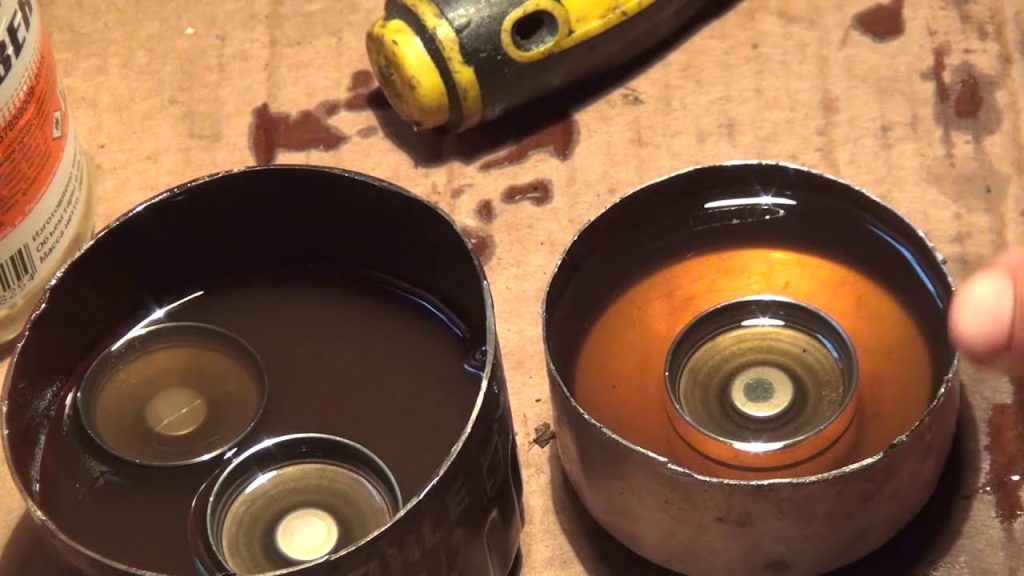

Next, the cylinder head cover is removed, and the axles on which the rocker arms are fixed are dismantled. In different car models, hydraulic lifters are removed in their own way, so you need to clarify how to do this correctly in a particular case.
The next step is to check the performance of the hydraulic lifters. The failed part must be replaced with a new one. If you press on the part with a wooden wedge, and it has too much free play, then, most likely, the element needs to be replaced.
The flushing itself is carried out in the following sequence:
- The axles on which the rocker arms are fixed are removed;
- You can use a magnet to remove the expansion joint. When dismantling, it is important not to damage either the part or the place of its installation;
- Every detail is lowered into the cleaner;
- To clean it, you need to slightly remove the hydraulic compensator from the liquid, and push on the plunger (you first need to tighten the valve ball so that it does not work) until it has more or less free travel;
- The same procedure is carried out in the second and third containers.
The motor parts are assembled in reverse order, but the washed hydraulic lifters must be dry. Once assembled, the power unit will start and idle for a few minutes to allow the engine oil to properly circulate throughout the system.
Procedure for installing hydraulic lifters
The sequence of installation of hydraulic lifters depends on the car model, because the engine compartment can be organized in its own way. But in many cars, this scheme is as follows:
- Dismantling of all equipment located above the valve cover is carried out, because it will need to be unscrewed and removed without damaging other elements (for example, the fuel system or ignition);
- The air filter is also removed, since it will also prevent the cover from being dismantled;
- The throttle cable is disconnected and the valve cover is unscrewed;
- The counter washer installed on the camshaft sprocket is flared;
- The asterisk is set in such a position that the marks coincide;
- The sprocket nut is unscrewed, and this part is fixed with a wire;
- The camshaft bed mount is dismantled. It is removed, and with it the camshaft;
- The rockers are dismantled (it is important to remember the sequence of their installation, therefore it is better to immediately put them in such a sequence so that the position of each of them is remembered);
- The cams are unscrewed, after which the sleeves of the adjusting bolts are carefully removed;
- If necessary, the surface on the valve flange sockets is rubbed in order to ensure maximum tightness;
- The cylinder head support washers are pressed using a special tool (desiccant);
- The rocker arms are removed;
- The hydraulic compensator is changing.
The whole structure is assembled in reverse order. After replacing the hydraulic lifters, it is imperative to install a new valve cover, and clamp the studs with a torque wrench. Here is a short video on how this work is done correctly:


Watch this video on YouTube
Hydraulic lifters video
In conclusion, watch a video review on how to eliminate knocking hydraulic expansion joints:


Watch this video on YouTube
Questions and answers:
What are hydraulic lifters for? Hydraulic lifters are small elements that allow you to automatically adjust valve clearances in the gas distribution mechanism. These devices work due to oil pressure in the engine lubrication system. Thanks to this, the dynamic characteristics of the car are improved and fuel consumption is reduced.
Where are the hydraulic lifters located? The hydraulic compensator is installed between the valve stem and the camshaft cam. Their shape and dimensions depend on the type of gas distribution mechanism and the size of the valves.
Why is the knock of hydraulic lifters dangerous? Faults in hydraulic lifters will primarily affect fuel consumption and vehicle dynamics. The reason is that the moment of spark formation or fuel supply does not correspond to the position of the piston for ideal combustion of the BTC. If you do not pay attention to the knocking, then at first there will be no problems with the motor. Subsequently, the noise of the internal combustion engine will increase, vibrations will appear (untimely supply and combustion of a mixture of air and fuel). When running, faulty hydraulic lifters can cause wear on the valve train.
